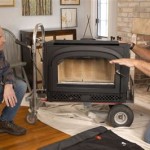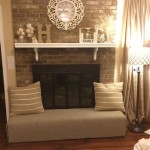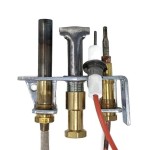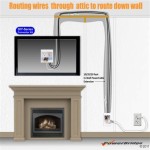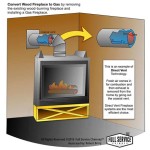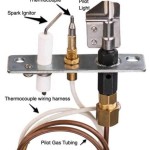Fireplace Insert Repair: A Comprehensive Guide
Fireplace inserts offer an efficient and aesthetically pleasing way to upgrade an existing fireplace. These self-contained units, typically made of cast iron or steel, slide into an existing fireplace opening, converting an inefficient open hearth into a more effective heating source. However, like any appliance, fireplace inserts can experience wear and tear, requiring repair to maintain optimal performance and safety. This article provides a comprehensive overview of common fireplace insert problems, diagnostic procedures, and repair strategies, covering both gas and wood-burning models.
Before attempting any repair, safety precautions are paramount. For gas inserts, always shut off the gas supply to the unit. Disconnecting the electrical power is also essential. For wood-burning inserts, ensure the fire is completely extinguished and the insert is cool to the touch. Consult the manufacturer's manual for specific safety guidelines and troubleshooting advice pertinent to the model in question. Ignoring these precautions can result in serious injury or damage to the appliance.
Common Problems in Gas Fireplace Inserts
Gas fireplace inserts, while convenient and efficient, are susceptible to a range of issues related to their gas and electrical components. Understanding these potential problems is crucial for effective diagnosis and repair.
One of the most frequent complaints is a pilot light that won't stay lit. This can stem from several causes. A dirty pilot orifice, responsible for delivering gas to the pilot flame, can be blocked by debris or carbon buildup. Cleaning the orifice, often with a fine wire or specialized cleaning tool, can resolve this issue. A faulty thermocouple, a safety device that senses the pilot flame and allows gas to flow to the main burner, is another common culprit. The thermocouple generates a small electrical current when heated by the pilot flame; if this current is insufficient, the gas valve will shut off. A multimeter can be used to test the thermocouple's output. A defective thermopile, which generates more voltage than a thermocouple and is used to power certain types of gas valves, can also cause similar problems. Finally, a malfunctioning gas valve, responsible for regulating the gas flow, could be the underlying issue. These valves are complex components and often require professional attention for repair or replacement.
Another common problem is burner malfunction. The main burner might ignite poorly, burn with a yellow or orange flame instead of a blue flame, or fail to ignite at all. These issues often relate to improper gas pressure, inadequate air supply, or dirty burner ports. Gas pressure should be checked and adjusted by a qualified technician. Blocked burner ports can be cleaned with a wire brush or vacuumed. The air shutter, which controls the amount of air mixing with the gas, can be adjusted to achieve optimal flame quality. Soot buildup on the logs can also affect burner performance and should be cleaned regularly.
Problems with the ignition system are also prevalent. Many gas fireplace inserts use electronic ignition systems, such as spark igniters or hot surface igniters. A failing igniter will prevent the fireplace from starting. The igniter can be tested with a multimeter to determine if it is receiving power and producing a spark or heat. Faulty wiring or a defective control module can also contribute to ignition problems. Furthermore, the flame sensor, a safety device that detects the presence of the main flame, can malfunction, causing the fireplace to shut down prematurely. Cleaning or replacing the flame sensor may be necessary.
Finally, ventilation issues can significantly impact the performance and safety of a gas fireplace insert. Gas fireplaces produce byproducts of combustion, such as carbon monoxide, which must be properly vented outside the home. Blocked or damaged venting can lead to dangerous carbon monoxide buildup. Regular inspection and cleaning of the venting system are crucial. A professional should inspect the venting for proper installation and ensure there are no obstructions. Carbon monoxide detectors should be installed and maintained to provide early warning of any leaks.
Common Problems in Wood-Burning Fireplace Inserts
Wood-burning fireplace inserts, while simpler in design than gas inserts, face their own set of unique challenges. These issues often relate to combustion efficiency, draft, and structural integrity.
One of the most common problems is poor draft. A strong draft is essential for drawing combustion gases up the chimney and providing adequate air for combustion. Insufficient draft can lead to smoke entering the house, reduced heating efficiency, and increased creosote buildup. Several factors can contribute to poor draft. A blocked chimney, often caused by creosote buildup, animal nests, or debris, is a primary cause. Regular chimney cleaning is essential for maintaining proper draft. The chimney's height and diameter also play a critical role. An undersized or overly short chimney may not generate sufficient draft. Downward drafts can be caused by nearby trees or buildings. A chimney cap can help prevent downdrafts and keep out debris. Finally, a cold chimney can inhibit draft; priming the chimney by burning a small amount of newspaper can help establish an upward draft.
Another frequent issue is excessive creosote buildup. Creosote is a flammable byproduct of incomplete combustion that accumulates in the chimney. Excessive creosote buildup poses a significant fire hazard. Burning unseasoned wood, which contains a high moisture content, contributes to increased creosote production. Operating the fireplace with a low fire also promotes creosote buildup. Regular chimney cleaning by a qualified professional is crucial for removing creosote. Burning seasoned wood and maintaining a hot fire can help minimize creosote formation. Furthermore, inspecting the chimney regularly for creosote buildup can allow for early detection and prevention of potential hazards.
Damaged firebricks are another common problem. Firebricks line the combustion chamber and protect the metal shell of the insert from high temperatures. Over time, firebricks can crack, crumble, or break due to thermal stress. Damaged firebricks reduce the efficiency of the fireplace and can eventually lead to damage to the insert itself. Replacing cracked or broken firebricks is essential for maintaining the insert's integrity. Firebricks can be purchased at most fireplace supply stores. Removal and replacement of firebricks are relatively straightforward, requiring only basic tools. It is crucial to use the correct type of firebrick for the specific fireplace insert.
Finally, air leaks can significantly reduce the efficiency of a wood-burning fireplace insert. Air leaks can occur around the door, gaskets, or seams of the insert. Uncontrolled air infiltration reduces the amount of air available for combustion, leading to incomplete burning and reduced heat output. Replacing worn or damaged door gaskets is essential for sealing the firebox. High-temperature sealant can be used to seal any gaps or cracks in the insert's seams. Ensuring a tight seal around the insert will improve its efficiency and reduce fuel consumption.
Diagnostic Procedures and Repair Strategies
Effective fireplace insert repair requires a systematic approach to diagnosis and repair. This section outlines common diagnostic procedures and repair strategies for both gas and wood-burning models.
For gas fireplace inserts, the first step is visual inspection. Examine the pilot light, burner, and ignition system for any obvious signs of damage or blockage. Check the gas lines for leaks and ensure that all connections are tight. Listen for any unusual noises emanating from the gas valve or blower motor. Use a multimeter to test the thermocouple, thermopile, and igniter for proper functionality. Consult the manufacturer's manual for specific voltage and resistance values. If a gas leak is suspected, immediately evacuate the area and contact a qualified gas technician.
For wood-burning fireplace inserts, begin with a visual inspection of the chimney and firebox. Check the chimney for creosote buildup, obstructions, and structural damage. Examine the firebricks for cracks, spalling, or missing pieces. Inspect the door gasket for wear and tear. Look for any signs of air leaks around the door or seams of the insert. Perform a smoke test to assess the draft. Light a small fire in the firebox and observe the smoke behavior. The smoke should be drawn quickly and efficiently up the chimney. If the smoke lingers or enters the room, there is likely a draft problem.
Repair strategies will vary depending on the specific problem. For a dirty pilot orifice, use a fine wire or specialized cleaning tool to remove any debris. For a faulty thermocouple or thermopile, replace the component with a new one of the correct type. For a malfunctioning gas valve, consult a qualified gas technician for repair or replacement. For blocked burner ports, clean them with a wire brush or vacuum. For a damaged igniter, replace it with a new one. For creosote buildup in the chimney, schedule a professional chimney cleaning. For cracked or broken firebricks, replace them with new ones. For worn or damaged door gaskets, replace them with new ones. For air leaks, use high-temperature sealant to seal any gaps or cracks.
When performing any repair, use the correct tools and materials. Follow the manufacturer's instructions carefully. If you are not comfortable performing a repair yourself, contact a qualified technician. Improper repair can be dangerous and can void the warranty. Regular maintenance, such as cleaning the burner, venting, and firebox, can help prevent problems and extend the life of the fireplace insert. Proper maintenance includes inspecting the appliance regularly for signs of wear and tear. Maintaining detailed records of maintenance and repairs can also be beneficial for future troubleshooting.
Beyond the components of the insert itself, the surrounding area should also be considered during repair. Ensure adequate clearance from combustible materials around the fireplace insert based on manufacturer specifications. Inspect the hearth extension for cracks or damage. Verify that the area around the appliance is clean and free of flammable materials. Addressing these surrounding conditions contributes to the safe and effective operation of the fireplace insert.

Best Fireplace Insert Repair Installs Ton Service

Gas Fireplace Insert Repair Install Princeton Service

Firebox Repair Rebuilding Louisville Expert Certified Fireplace

Gas Fireplace Insert Install Frderick Md Repair Service

Fireplace Insert Installation Frederick Md Repair Service

Firebox Repair Professionals Restoration Rebuilding

Does This Fireplace Inserts Need To Be Replaced Immediately Interior Inspections Internachi Forum

Wood Insert Repair Installations Fireplace Service In Ton

Can A Fireplace Insert Be Repaired All Pro Chimney

Fireplace Inserts Everything You Need To Know Full Service Chimney
Related Posts

